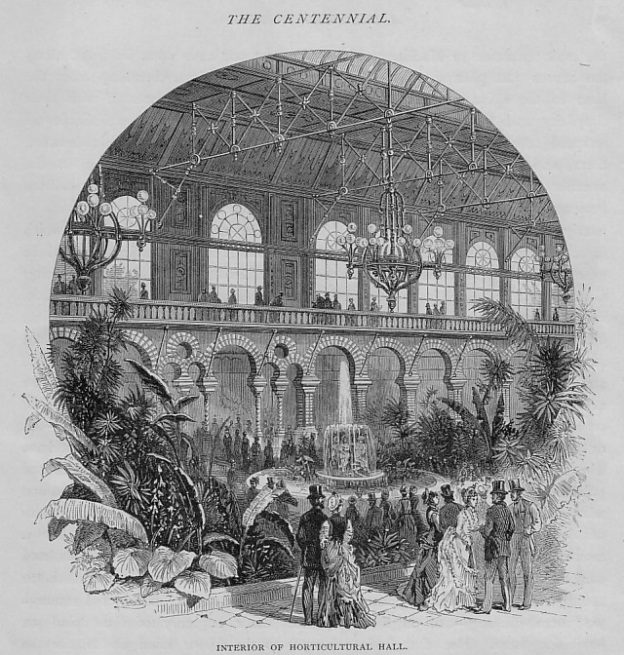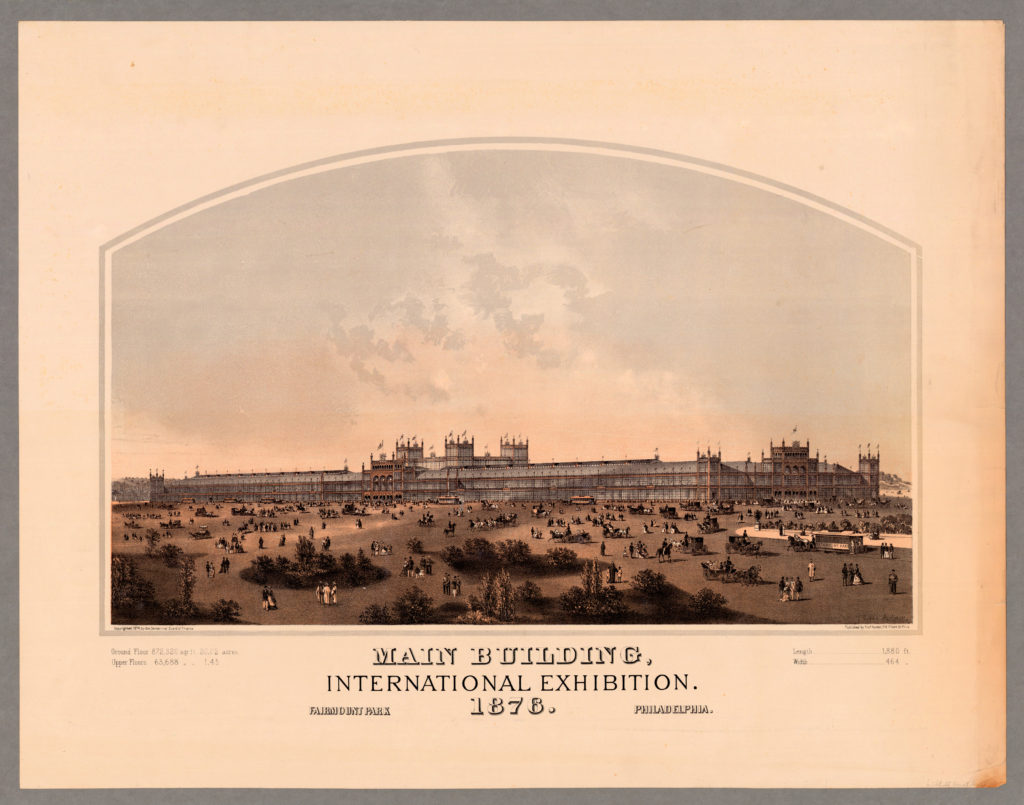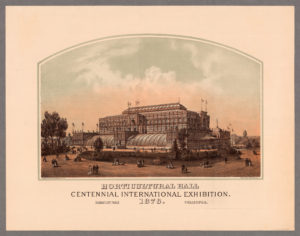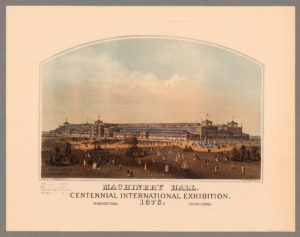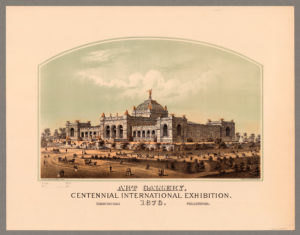It will probably come as no surprise that the Fourth of July is one of our favorite holidays here at AAS! In recent years, AAS staff has written about a number of topics on the holiday. We’ve written about how AAS founder Isaiah Thomas celebrated in 1814 in the midst of the War of 1812; we’ve shared Ohio judge and congressman Elnathan Scofield’s eighteen toasts dedicated to the holiday; and we’ve examined how the Declaration of Independence was disseminated throughout the colonies.
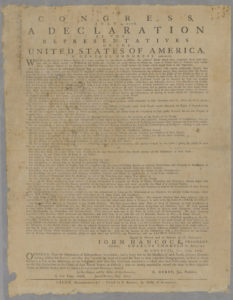
This year, we wanted to go big! And it’s difficult to imagine a celebration bigger than the one honoring the 100th anniversary of the signing of the Declaration. (1876 also marks the unofficial cut-off year for our collections, although many of you already know that we have items that go well beyond that!) America is a diverse place, and every town and city has its own rich history celebrating this holiday. As readers might guess, in 1876, Philadelphia was the site of one of the biggest celebrations in the country.
Since this post falls between the start of summer and the Fourth of July holiday weekend, we also wanted to start off our summer the right way, too! While it’s too early to know what this season holds for us all, summers often bring in fairs, carnivals, and other community events. Is there an event bigger than the World’s Fair?
The Centennial International Exhibition of 1876 was the first official World’s Fair to be held in the United States. Held in Fairmount Park, Philadelphia, from May 10 to November 10, nearly 10 million visitors visited the Exposition! The opening ceremony was attended by President Ulysses S. Grant and his wife Julia along with 186,272 people–110,000 entered with free passes.
Centennial America (below) is one of the lithographs commissioned for the exhibition. Created by Armstrong & Co. Lithographers from Boston, this design depicts a group of portraits and American history vignettes. George Washington is centered on the lithograph. The signers of the Declaration of Independence appear above him, and the 1876 Exhibition Main Building is pictured at center just below our first president. The revolutionary scenes depicted here include the the Boston Tea Party, the Battles of Bunker Hill and Lexington, and the surrender at Yorktown.
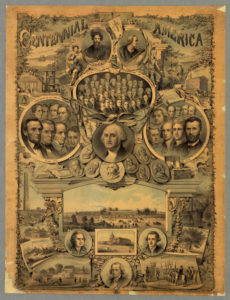 There was too much printed material produced for the event to adequately display here, but we wanted to share a few items from our collections that really showcase the size and space of the exhibition. We hope these images offer our readers a wide scope impression of the exhibition setting and serve as a kind of walking tour through 1876 summer celebrations.
There was too much printed material produced for the event to adequately display here, but we wanted to share a few items from our collections that really showcase the size and space of the exhibition. We hope these images offer our readers a wide scope impression of the exhibition setting and serve as a kind of walking tour through 1876 summer celebrations.
The first image (below) depicts a panoramic bird’s eye view of the exhibition’s construction. Not only can you see the progress of the fair’s buildings, you can also see all of Philadelphia. If you look carefully in the foreground, you’ll see men and women staring out from the observatory tower. We hope you’re not afraid of heights! The subsequent image, designed by lithographer Louis Prang, sometimes called “the father of the American Christmas card,” shows how the entire expanse of the exhibition grounds looked once completed.
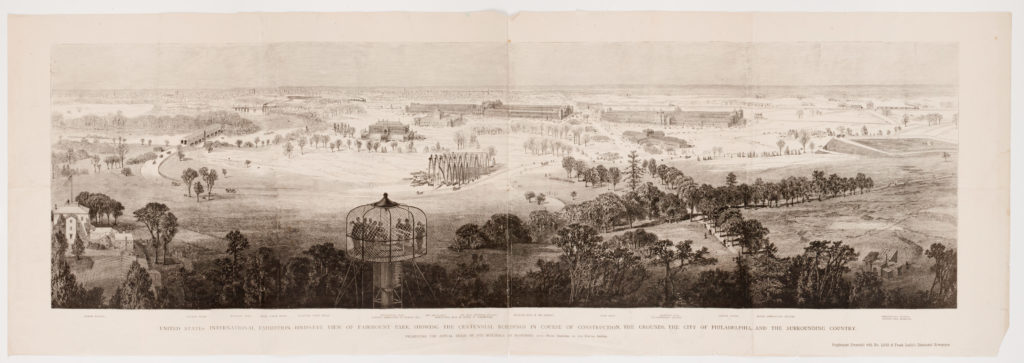
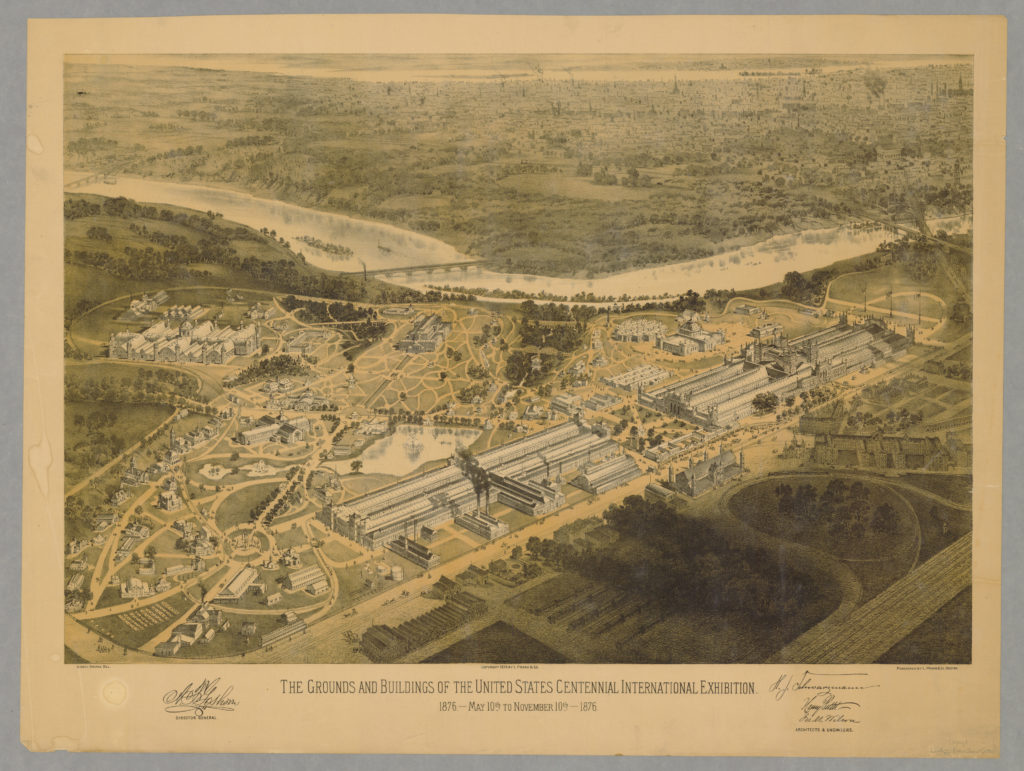 As you can see, the site was huge! More than 200 buildings were constructed for the Exposition. To make sure guests paid for admission, a fence was erected around the grounds; it spanned nearly three miles long. The map of the site was produced by Van Ingen & Snyder, publishers, of Philadelphia. It identifies all of the major buildings of the Exposition and also shows the bird’s eye view angle in the upper right-hand corner. Beautiful as the map may be, some might also notice that it lacks a legend that offers some sense of the scale.
As you can see, the site was huge! More than 200 buildings were constructed for the Exposition. To make sure guests paid for admission, a fence was erected around the grounds; it spanned nearly three miles long. The map of the site was produced by Van Ingen & Snyder, publishers, of Philadelphia. It identifies all of the major buildings of the Exposition and also shows the bird’s eye view angle in the upper right-hand corner. Beautiful as the map may be, some might also notice that it lacks a legend that offers some sense of the scale.
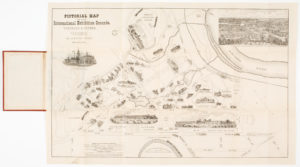 There were five main buildings in the Exposition. They were the Main Exhibition Building, Agricultural Hall, Horticultural Hall, the Machinery Hall, and the Art Gallery. Can you find all of these buildings in the map?
There were five main buildings in the Exposition. They were the Main Exhibition Building, Agricultural Hall, Horticultural Hall, the Machinery Hall, and the Art Gallery. Can you find all of these buildings in the map?
This is where our tour really begins. The set of five lithographs that appear below were actually commissioned by the Centennial Board of Finance two years before the Centennial Exhibition even began. These exquisite prints were used for publicity and fundraising. Louis Aubrun was the artist who created the original lithographs of the buildings, and Philadelphia printer Thomas Hunter produced multiple prints that were sold separately as souvenirs for this future tourist attraction. To give you a sense of scale, each of the images below measures about 43 x 58 cm (or about 16 x 22 inches). These images were quite popular and were later used for other event memorabilia, including souvenir handkerchiefs and scarves!
Fourth of July that year must have been quite the spectacle! In his description of the holiday festivities, J. S. Ingram, author of The Centennial Exposition, describes a crowd of 50,000 people gathering at Independence Square. Four thousand seats were arranged for invited guests, and an additional 10,000 people participated in a parade that morning. Of the parade, he writes,
The great military parade, the finest, ever seen in Philadelphia, came gloriously marching down Chestnut Street early in the morning, their colors glowing and their bright bayonets gleaming in the sunlight, while music from many a splendid band filled the air with its inspiriting strains.
Ingram’s full descriptions of the Exposition and the Fourth of the July celebration are available here. Despite these impressive numbers, July was actually one of the poorest attended months! That’s largely due to a heat wave that hit the city; for ten consecutive days, temperatures reached 100 °F. As the weather cooled in the fall, attendance numbers surged. The average daily attendance in September rose to 94,000. October saw an average of 102,000 attendees each day, and November 115,000.
These landscapes offer us a glimpse inside one of the biggest summer celebrations of 1876, an event that arrived after another time of turmoil and unease in this country. While both our Fourth of July celebrations and summertime activities might look a little differently this year from prior year’s, the images here (and the Exposition itself) signify hope and optimism and remind us that looking for amusement and confidence about the future might be as easy as taking a walk and enjoying the natural and human-made landscapes . . . or opening a good book.
On behalf of everyone at AAS, please have a safe and happy Fourth of July!
For Further Reading:

